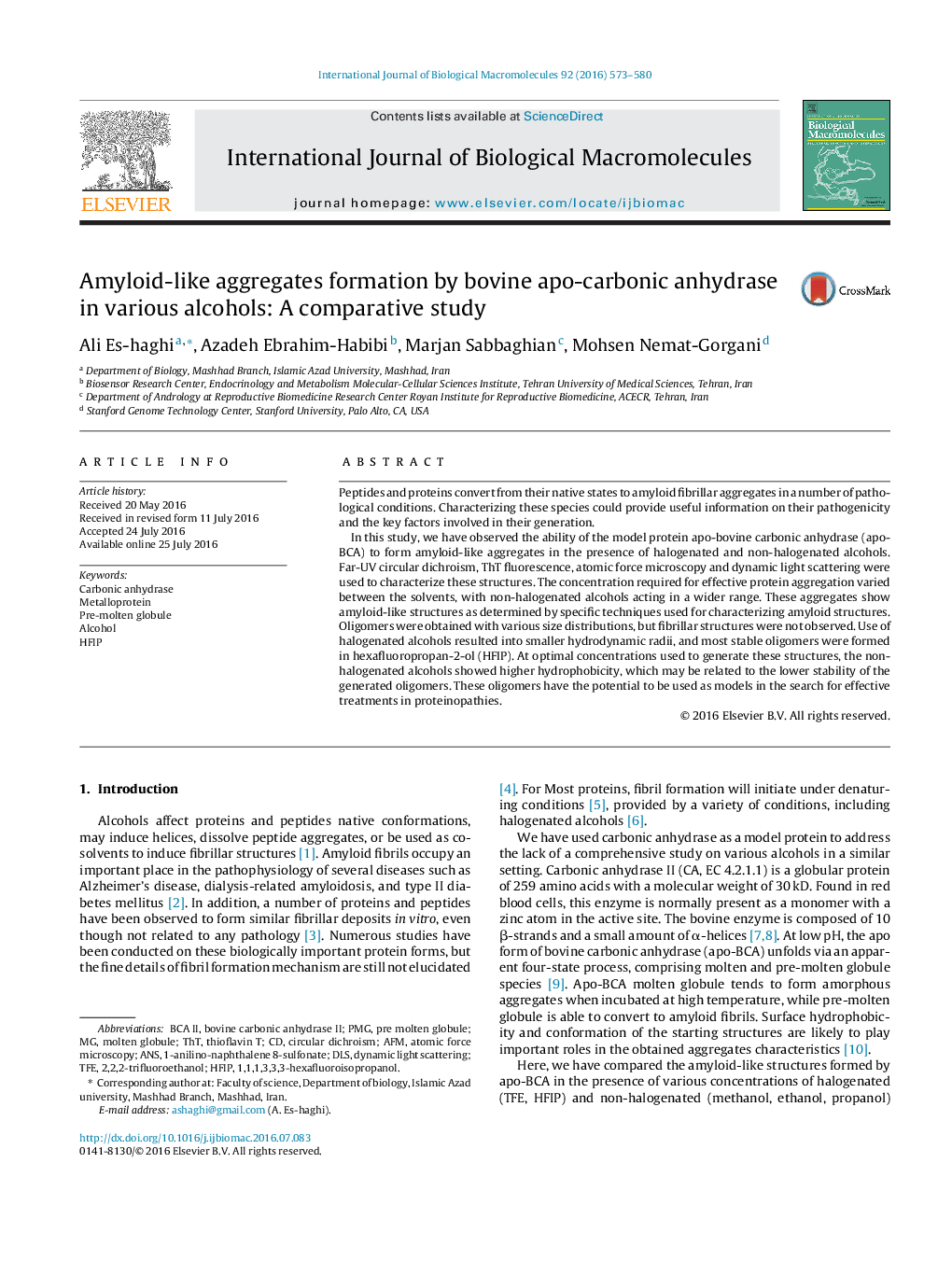| Article ID | Journal | Published Year | Pages | File Type |
|---|---|---|---|---|
| 8329725 | International Journal of Biological Macromolecules | 2016 | 8 Pages |
Abstract
In this study, we have observed the ability of the model protein apo-bovine carbonic anhydrase (apo-BCA) to form amyloid-like aggregates in the presence of halogenated and non-halogenated alcohols. Far-UV circular dichroism, ThT fluorescence, atomic force microscopy and dynamic light scattering were used to characterize these structures. The concentration required for effective protein aggregation varied between the solvents, with non-halogenated alcohols acting in a wider range. These aggregates show amyloid-like structures as determined by specific techniques used for characterizing amyloid structures. Oligomers were obtained with various size distributions, but fibrillar structures were not observed. Use of halogenated alcohols resulted into smaller hydrodynamic radii, and most stable oligomers were formed in hexafluoropropan-2-ol (HFIP). At optimal concentrations used to generate these structures, the non-halogenated alcohols showed higher hydrophobicity, which may be related to the lower stability of the generated oligomers. These oligomers have the potential to be used as models in the search for effective treatments in proteinopathies.
Related Topics
Life Sciences
Biochemistry, Genetics and Molecular Biology
Biochemistry
Authors
Ali Es-haghi, Azadeh Ebrahim-Habibi, Marjan Sabbaghian, Mohsen Nemat-Gorgani,
